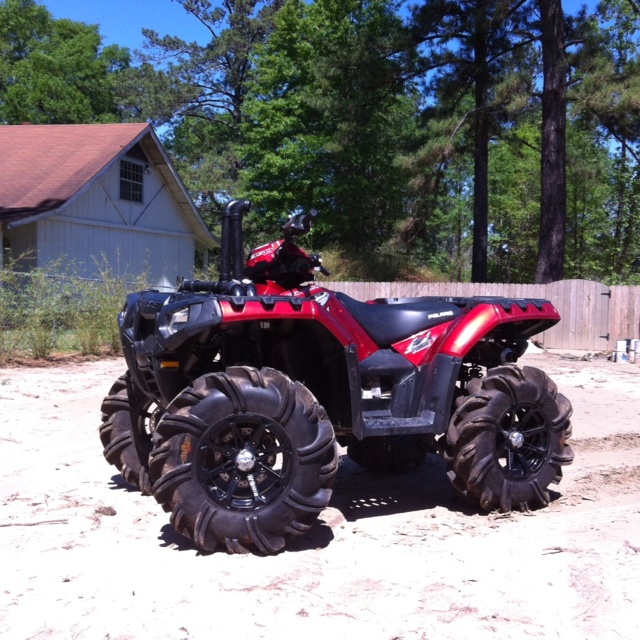The Vehicle Identification Number (VIN) of your Polaris ATV is a unique number used to identify your vehicle. It is stamped on the frame of your ATV. On vehicles from 1997 and newer, the VIN is 17 digits. Prior to that, a VIN was only seven digits.
What year is y in polaris? That tells you what year it is. “Y” is 2000, “1” is a 2001 and so on. Just as important to you when buying parts and accessories for any Polaris is the model number.
What year did polaris magnum start? Starting in 1995 with the Polaris Magnum 425 4-stroke ATV and in 1997, with the introduction of the “twin 700” snowmobile engine Polaris started the development and production of in-house produced power plants, known as the “Liberty” line of engines, now found in many models across their current production lines.
When did the first Polaris ATVs start showing up? After 30 years of building snowmobiles, the first Polaris ATVs began showing up on dealer floors in 1985, throwing a wrench in an industry that up to that point was completely dominated by Japanese brands. Not only were these 1985 models the first Polaris ATVs…they were the first American-made ATVs.
What is a Polaris ATV? Polaris ATVs have pushed the boundaries ever since and the brand saw huge success with the venerable Sportsman 500 and its innovative front storage system. But when most people think of Polaris, the first thing that comes to mind is the RZR.
Table of Contents
It is stamped on the frame of your ATV.
– Find the 17-character vehicle identification number on the frame of your four wheeler.
– Look at the 10th character of the vehicle identification number.
– Use the 10th character to determine the year model of the four wheeler.
Read the tenth digit. This digit represents the year that the ATV was made. For example, A=1980, B=1981, Y=2000, 1=2001, 9=2009 and A=2010. This letter or number can repeat (the “A,” for example), but the codes of the other digits in the VIN allow you to know in which year the ATV was made.
– On vehicles from 1997 and newer, the VIN is 17 digits.
– For Sportsman 400, 450, 500, 570, 800 and ETX models; 2013 Hawkeye models and Sportsman 6×6 models from 2011-14, the VIN can be found on the left rear frame (1).
So why is the light still on? Here’s something you probably don’t know: after clearing the car’s computer you will need to drive for about 50 to 100 miles. As you drive your car the computer will monitor all the sensors and register the results.
Check that the 10th digit matches the year of manufacture. From 2000 onward, it is a number, and before 2000, it is a letter. For example, a 1998 model will have the letter W in the 10th position. Determine the plant where the ATV was made with the 11th digit.
Interpret the 10th character to find the year the vehicle was manufactured. The letter S is used for 1995, T for 1996, V for 1997, W for 1998, X for 1999, Y for 2000. The number 1 is used for 2001, 2 for 2002, 3 for 2003, 4 for 2004, 5 for 2005, 6 for 2006, 7 for 2007, 8 for 2008 and 9 for 2009.
The letter S is used for 1995, T for 1996, V for 1997, W for 1998, X for 1999, Y for 2000. The number 1 is used for 2001, 2 for 2002, 3 for 2003, 4 for 2004, 5 for 2005, 6 for 2006, 7 for 2007, 8 for 2008 and 9 for 2009.
Turn the ignition on and wait for the “service engine soon” light to blink and shut off. This will reset the light on your dash.
The flashing service wrench icon on a Polaris Sportsman’s speedometer can lead many riders to panic. In most cases, this icon is triggered by the engine’s hours of operation reaching a programmed interval, and it acts as a friendly reminder that your ATV is ready for a routine servicing.
Can you reset check engine light without disconnecting battery? You can reset the check engine light without disconnecting the battery by using an OBD2 scanner.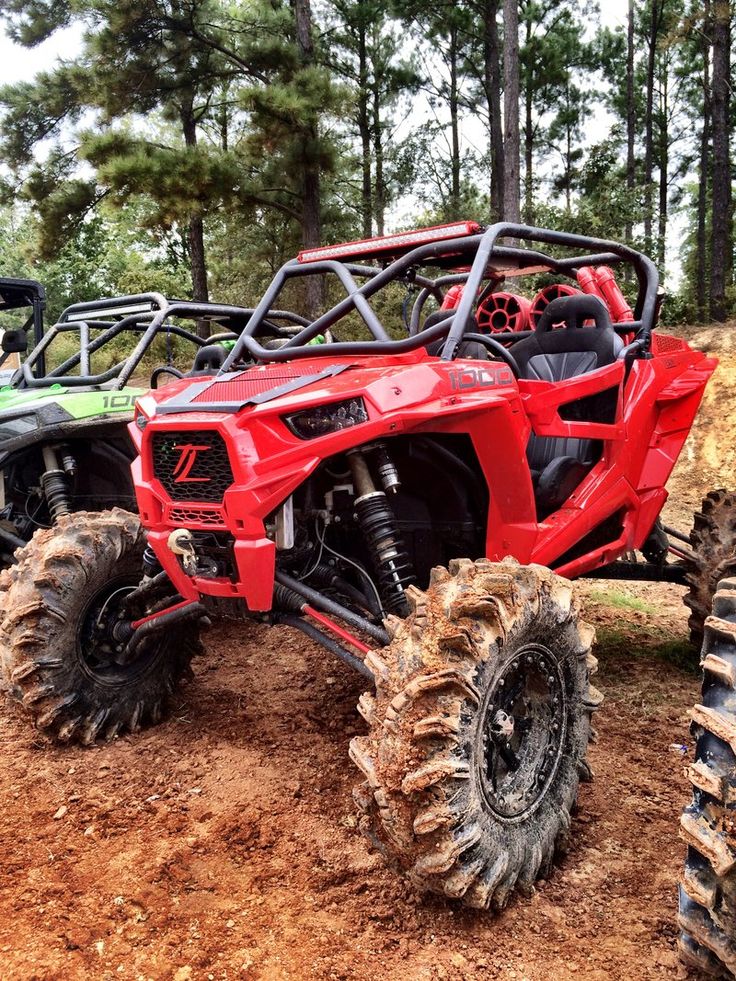 If you drive long enough after fixing the problem, the check engine light will on most car models go away by itself.
If you drive long enough after fixing the problem, the check engine light will on most car models go away by itself.
A Polaris ATV vehicle identification number, which contains the serial number, is typically on the left frame rail inside the left-front wheel well next to the fender on the right hand side. The last six characters of the VIN are the vehicle’s serial number.
The Vehicle Identification Number (VIN) is a unique 17-digit number used to identify your Polaris RANGER. Your RANGER’s VIN can be found stamped on the frame. Its exact location varies based on model. Most RANGER vehicles from model year 2015 until present feature a VIN stamp in the left rear wheel well.
– Find the 17-character vehicle identification number on the frame of your four wheeler.
– Look at the 10th character of the vehicle identification number.
– Use the 10th character to determine the year model of the four wheeler.
Interpret the 10th character to find the year the vehicle was manufactured. The letter S is used for 1995, T for 1996, V for 1997, W for 1998, X for 1999, Y for 2000. The number 1 is used for 2001, 2 for 2002, 3 for 2003, 4 for 2004, 5 for 2005, 6 for 2006, 7 for 2007, 8 for 2008 and 9 for 2009.
Turn the ignition on and wait for the “service engine soon” light to blink and shut off. This will reset the light on your dash.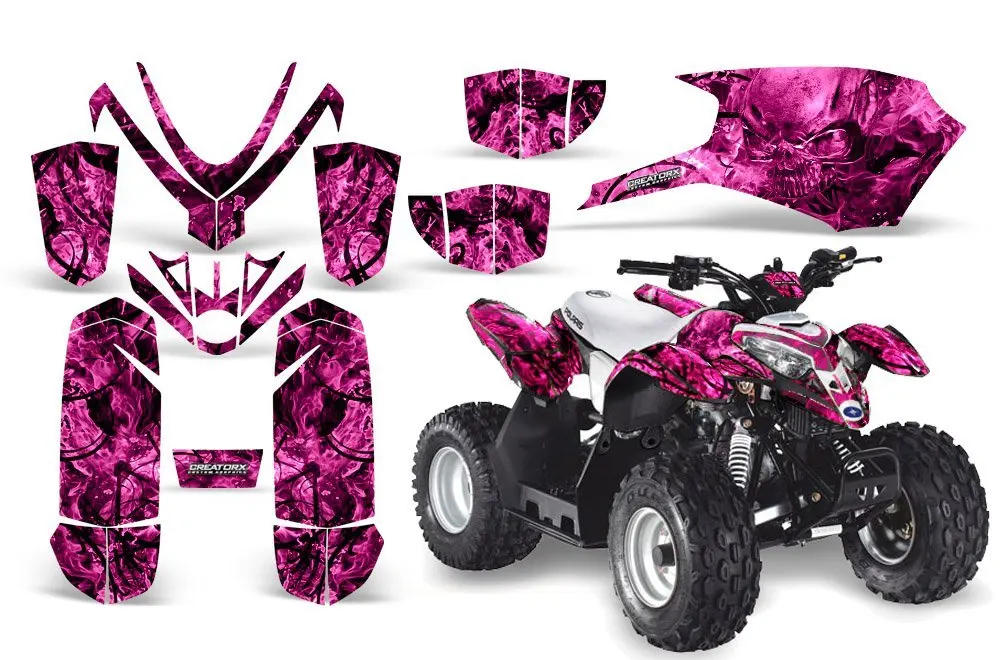
Insert the key in the ignition, turn the car on for a second, and turn it off for another second. Repeat this process three times. Once you turned your car on/off three times, the check engine light should go away by itself.
This is a list of Polaris ATV VIN locations to help you locate your quad’s VIN, locations vary by model and year. A VIN is stamped on the frame of all-terrain vehicles by the manufacturer to identify it and to comply with motor vehicle laws.
What is a VIN? VIN is the acronym for vehicle identification number. A Polaris ATV VIN is 17 digits in length on all modern ATVs and is stamped directly onto the quad’s frame. Each digit represents information specific to that ATV. Prior to 1997 a Polaris used 7 digits VINs on some models, don’t confuse these with the engine’s serial number. Learn more about ATV VINs, including how to decode them manually, by reading the ATV VIN number guide. Now, onto the reason you’re here, lets find your ATV’s VIN location.
Now, onto the reason you’re here, lets find your ATV’s VIN location.
 Note: in this location the sticker is prone to wearing off
Note: in this location the sticker is prone to wearing offHelp keep this Polaris ATV VIN location list up to date, if you find an exception let me know! I hope you found this list helpful in your search of your four-wheeler vehicle identification number.
In the history of ATVs, the company Polaris (Polaris) occupies, without exaggeration, an important place, since it was for the first time in the USA that a full-fledged ATV ATV (All Terrain Vehicle - all-terrain vehicle) was released - a direct prototype modern ATV, built according to the latest technology at that time. But first things first.
The distant progenitor of ATVs, as well as motorcycles, was, of course, a bicycle. We will not go into historical details, but it is worth mentioning the very first car that can be called the ancestor of the ATV. Her in 1896, became Henry Ford's creation : a four-wheeled wagon with a two-cylinder engine of 4 horsepower unprecedented at that time, running on ethanol. On the wagon, he installed bicycle wheels and a double seat that looked like a tool box.
In 1924, the Frenchman Charles Moshe introduced the public to the public "velocar" with pedals - in fact, just a more stable version of the bike, developing a decent speed by those standards. He was very liked by those who did not have the funds for an expensive car. "Velocars" were popular with the French for a long time and gained particular relevance during the Second World War, when France was under fascist occupation, and gasoline was practically unavailable.
He was very liked by those who did not have the funds for an expensive car. "Velocars" were popular with the French for a long time and gained particular relevance during the Second World War, when France was under fascist occupation, and gasoline was practically unavailable.
However, if we do not take into account the usefulness of Moshe's creations for civilians during the war years, then
For about half a century, nothing fundamentally new was created in this industry. Craftsmen came up with structures similar to each other, evolution stomped on the spot. And there was no great need for it: the development of the automotive industry nullified the popularity of ATVs.
The next step in the development of the direction was marked by 1967 . In fact, it was from this moment that the story began off-road motorcycles.
John Plessinger - a graduate of the Cranbrook Academy of Science and Arts near Detroit - built an off-road tricycle as his thesis, calling it the "Sperry-Rand Tricart" and positioning the pilot's seat in a comfortable and stable recess.
But Plessinger's creative muse did not rest on this, and he set to work on the creation of the Tricart Stretcher Dragster, a tricart of a special design with a wheel far forward and resembling an arrow. He built this strange-looking unit for himself in order to race and ride on a frozen lake.
So, Plessinger patented the result of his thesis and sold the rights to its commercial production to a large company, which prompted smaller companies to do similar business.
But they were not destined to remain in history: in 1970 the Japanese Honda, which by that time had become one of the largest manufacturers of motorcycles and cars, released a hybrid of a car and a motorcycle - tricycle US 90 with a 70 cm engine 3 . However, the brainchild of the brilliant engineer Osamu Takeuchi did not at first take root in his homeland. But in the US, it was received with a bang: the all-terrain tricycle gained tremendous success on the sands of California beaches, demonstrating its suitability to be not only a household helper, but also a great way to get a drive from extreme skiing.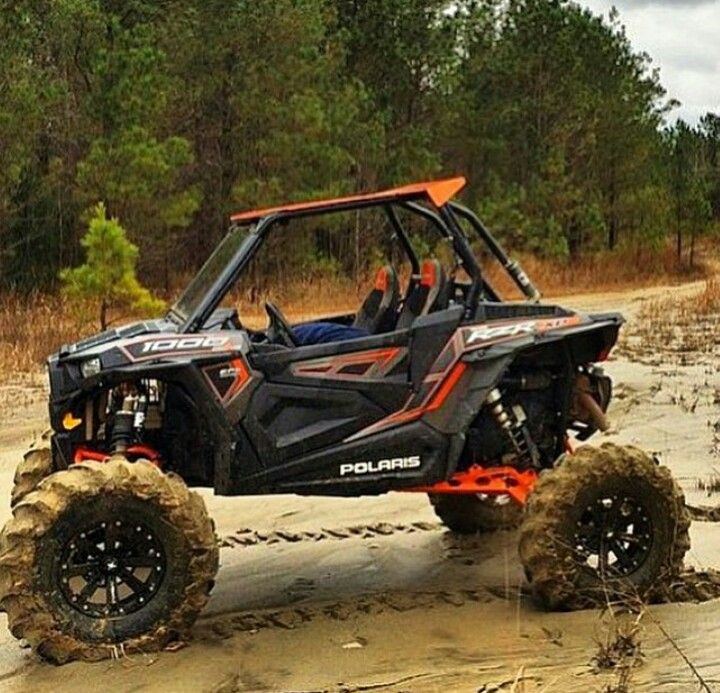
The Americans liked the Japanese tricycle so much that they even filmed it in one of the parts of the James Bond film Diamonds Are Forever ( Diamonds Are Forever , 1971).
Honda patented its invention literally from all sides, thanks to which for a long time it remained practically a monopolist in the production of three-wheeled all-terrain vehicles of this design.
However, in 1982 designer Aki Goto from Suzuki made a knight's move: he added a fourth wheel to his ALT125 and received a Suzuki QuadRunner LT125, and with it a good niche in the industry.
Curiously, the four-wheeled model was originally created as a "recreational vehicle for beginners." That is, a more stable four-wheel scheme was intended only to make it easier for inexperienced riders to learn, after which they had to change to more powerful three-wheeled ATVs. In addition, the addition of another wheel meant a heavier and more complex design, and hence a rise in price. But, despite all the nuances, the four-wheelers quickly pushed aside the three-wheeled competitor as much less balanced, stable and very dangerous when maneuvering.
But, despite all the nuances, the four-wheelers quickly pushed aside the three-wheeled competitor as much less balanced, stable and very dangerous when maneuvering.
Here, in Japan in 1982, the era of modern ATVs begins, associated with freedom, drive and the conquest of places that previously seemed impregnable for wheeled vehicles.
A In 1985 enters the "quad arena" Polaris with a real breakthrough - the first in the US 4-wheeled Polaris Trail Boss ATV. It pioneered the use of revolutionary technical features for the time, such as a variable speed automatic transmission (PVT), MacPherson type ATV front suspension, long travel rear suspension, all-wheel disc brakes and full-length solid footpegs.
At the same time as the Polaris Trail Boss, the Polaris Scrambler tricycle was produced. However, without releasing even 2000 copies, in 1986 it was discontinued, since tricycles lost their relevance.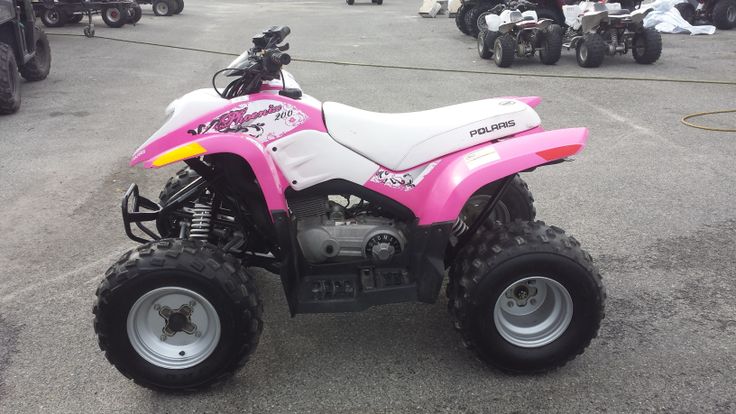
The Polaris Trail Boss set the benchmark for a full-fledged 4-wheel ATV for years to come, and kicked off the ATV market. Polaris has a firm place in the hearts of off-road enthusiasts. At the same time, each of the motorcycle manufacturers tried to release something new, trying to attract a buyer with engine size, equipment, and additional features. However, no one has succeeded in removing Polaris ATVs from the pedestal of the leader in the world of all-terrain vehicles.
Year after year, Polaris designers and engineers have improved their ATVs both in terms of performance and appearance. Particular attention was paid to improving the safety of the ATV driver.
As early as 1987, the introduced Polaris' first AWD automatic four-wheel drive system, which automatically engages all four wheels of an ATV when extra traction is needed, and switches to rear-wheel drive when that need no longer exists.
Since 1996, Polaris Sportsman ATVs have been fitted (an industry first!) with IRS independent rear suspension to minimize body roll and ensure a smooth ride.
These exclusive technical solutions, combined with the high strength of the frame, the reliability of all components and assemblies have made the Sportsman one of the most popular ATVs in the world! Thoughtful and trouble-free, a good part of enthusiastic riders wished to buy a Polaris ATV.
Concerned about enhancing the experience of outdoor enthusiasts, Polaris has developed and since 2005 brought to market the first accessory standardization system Lock&Ride . It allows you to install and remove all kinds of additional accessories and options for ATVs in minutes, including windshields, mirrors, cargo area guards, hand protection, driver and passenger seat heating, box bags, gun cases and even snow plows.
In 2006, Polaris releases the first mid-size ATV with IRS independent suspension on the ATV market. A year later, the first ATVs with a convertible rear seat appear.
2008 marks a significant milestone in the company's history with the sale of the 1,000,000th Sportsman ATV.
2011 marked the release of the Sportsman XP EPS 850 EFI , the most powerful ATV in the industry with a new 75 hp 850cc engine.
Today, the company has one of the largest sales markets for its products, including the military industry, which is the best confirmation of the quality and reliability of Polaris equipment.
Tackling sultry sands, traversing foggy off-road hunting, wading through taiga forests, tackling work debris on the ground, or winning quadcross competitions, Polaris ATVs handle it all with ease.
In 1997, introduced the RANGER , the first all-terrain vehicle with a completely new concept: side-by-side side-by-side, automotive steering (with steering wheel) and roll cage. But its main difference, of course, is in the utilitarian purpose. Its appearance markedly stimulated the development of a new class of multi-purpose utility SUVs UTV (Utility Terrain Vehicle). RANGER was immediately appreciated by farmers, for whom these machines have become excellent assistants in their work. It can safely be called the most convenient, most practical and versatile all-terrain vehicle. This "workhorse" was created in order to transport household goods, remove snow, clear debris and debris, even uproot stumps. The RANGER is also good for recreation - many have “tasted” it on hunting trips, fishing trips and travels in the wild. Not surprisingly, this branch of Polaris production began to develop rapidly and intensively, and today has a large model range with many specifications.
RANGER was immediately appreciated by farmers, for whom these machines have become excellent assistants in their work. It can safely be called the most convenient, most practical and versatile all-terrain vehicle. This "workhorse" was created in order to transport household goods, remove snow, clear debris and debris, even uproot stumps. The RANGER is also good for recreation - many have “tasted” it on hunting trips, fishing trips and travels in the wild. Not surprisingly, this branch of Polaris production began to develop rapidly and intensively, and today has a large model range with many specifications.
ATV Club
August 21, 2014
Some Polaris Industries ATVs have a rather unusual ATV system. Sometimes they even say that they have a permanent 4x4. But is it?
There is a proverb in Russian that a spoon is good for dinner. I'm not sure that the Americans from Polaris heard it, but they built their all-wheel drive system for the modern Ranger family of auto ATVs that way.
I'm not sure that the Americans from Polaris heard it, but they built their all-wheel drive system for the modern Ranger family of auto ATVs that way.
Readers have already paid attention to the description of the all-wheel drive features of the Polaris Ranger 570 EFI tested in the last issue. And they asked me to tell you more about it.
AWD clutch parts. On the left - a magnetic element and a bushing, on the right - a fixing ring and an inner race with rollers in a separator
Cross section of the AWD mechanism. The rollers are dependent on a 12 volt supply to the clutch
This type of drive is used by Polaris on both UTV Ranger and traditional Polaris ATVs.
The classic ATV all-wheel drive scheme with traditional plug-in all-wheel drive and front differential lock requires a lot of experience and skills from the driver. It is necessary to determine the moment of connection in time, stop for the manipulation itself, select the conditions for blocking the front gearbox, in addition, all these manipulations are performed manually.
How it works. Left: casters move freely - front axle disengaged; right: rollers fixed in one position - front axle is working
The Ranger, like any other Polaris AWD ATV, can instantly transition from off-road to hard-ground mode without stopping or losing control or traction, and without any additional action from the driver. At the same time, off-road, AWD automatically provides a transmission condition similar to a locked four-wheel drive. The Ranger has a permanent drive rear, but the rear differential is blocked by moving the toggle switch on the dashboard to the middle position. In this position, the Ranger becomes like all other ATVs in 4x2 mode - that is, there is a rigid connection between both rear wheels.
To make the quadric all-wheel drive, the driver moves the same toggle switch to the highest position. You can do this on the go (with the gas off), the ATV remains fully controlled, with a light steering, and on hard ground, the inclusion of all-wheel drive is not felt.